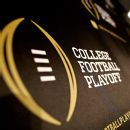The Alliance, a new partnership between three of the five most powerful conferences in college athletics, was announced during a video conference on August 24.
The launch generated immediate reaction and set expectations for significant action, but it also prompted a lot of questions. What is it?
The Alliance came together weeks after the SEC added Oklahoma and Texas, and amid a tumultuous summer for college athletics. It was formed as a response to realignment. The main purpose was to keep teams from leaving and not cause more disruption, but it also drew clear tribal lines and distanced Alliance members from the SEC and the weakened Big 12.
Six months have passed since the Alliance was announced, and while the three leagues are working behind the scenes, the same question remains.
College Football Playoff expansion negotiations collapsed after an 8-3 vote and the Alliance popped back onto fans' radar. The leagues were portrayed as obstinate toward a more inclusive system, and while each maintains that it voted independently because of its distinct concerns, their link through the Alliance made them easy targets.
The Alliance has accomplished some of its stated goals in six months. After the initial announcement, conference realignment continued, but the Big Ten and the Pac-12 have remained the same. The three leagues aim to increase games between them in the highest-profile sports, while pooling resources to address areas impacting student-athletes, such as physical and mental wellbeing, academics, social justice and diversity.
Football scheduling has not gained much traction for the Alliance. Some on the outside claim the impact has been insignificant, even though those in the Alliance say they are making progress and even exceeding initial expectations.
There are several Alliance football games coming, but there hasn't been a major scheduling surge.
The confusion and mystery that still surrounds the Alliance is underscored by the CFP aftermath. Last week, the Commissioners of the Atlantic Coast Conference, Big Ten, and Pacific-12 Conferences spoke with several people to clear up what the Alliance is and where it is going. The leaders in college athletics who work outside of the Alliance were contacted by ESPN.
What happened?
The decision to keep the four-team playoff for the next four years was made by the 10 FBS commissioners and Notre Dame athletic director. During the current 12-year contract, the CFP needed a unanimous, 11-0 decision to expand.
The Big Ten, the Atlantic Coast Conference and the Pacific-12 voted against the 12-team proposal, according to the chair of the board of managers. The Alliance is made up of three leagues who voted against it.
This isn't a voting bloc, saidPhillips last Friday.
When asked about his initial reaction to the vote, Florida athletic director Scott Stricklin said it appeared to be a blocked vote, though he added that he had no inside knowledge.
He said that if they say that is not the case, he takes it at face value.
The conference was united in its belief that this is not the right time for expansion.
The Big Ten had questions about the impact of an expanded format on athletes, revenue sharing, and making sure multiple media partners are assured of an opportunity to bid on rights. The Big Ten has been steadfast in its position that the champion of the Power 5 conferences and one additional conference should have an automatic bid in an expanded playoff.



If the vote was specific to the final two seasons of the current contract, the conference would have voted in favor of the proposal. The motion brought to the table did not split playoff expansion into two votes, one for the current 12-year contract and another for 13 and beyond. It was only one vote on expanding the CFP to include the six highest-ranked conference champion and the next six highest-ranked teams. The Big Ten considered that as well.
Warren said that they have to take aholistic view if they planned on signing a long-term deal. I think that is a good business.
The idea that the three Commissioners worked together to slow or stop expansion is a narrative that certain people benefit from.
Big 12 commissioner Bob Bowlsby said that he could only respond to what they told him, and what they said was not the same. They were all unique to them, so I didn't think they were a voting bloc.
Jon Steinbrecher said that he takes his colleagues at face value. It is an easy thing to point out, that does not make it a grand conspiracy.
The only Power 5 commissioner who served on both the NCAA constitution committee and transformation committee wasPhillips. There are too many unanswered questions regarding health and safety of the athletes, the disruption in college athletics, and a desperate plea for federal legislation to manage NIL are some of the reasons why the ACC is reluctant.
The Big Ten and the Pac-12 felt there were unresolved issues, and the Pac-12 made specific requests related to the Rose Bowl, which traditionally pits the Big Ten champion against the Pac-12 champion. In an expanded playoff, the Rose Bowl would likely be getting the third-best team from the Pac-12 and the fourth-best from the Big Ten, on average, as the top teams would almost certainly be ranked in the top 12. The Rose Bowl doesn't want a semifinal competing against the bowl game on New Year's Day. The Sugar and Orange bowls have contracts with the Power 5 conferences.
The Paul Finebaum Show asked what we were asking for, and he said it was a small ask. It's not a big ask. It is difficult to expand the College Football Playoff and keep the traditions of the bowl games.
The unknown revenue distribution in Year 13 was a concern for the Big Ten and the Pac-12. Without knowing the TV contract, the CFP couldn't say how the revenue would be shared. The revenue split was not determined if it would stay the same.
After we agree that we are going to expand currently, we will answer that down the road, Warren said. We think it is the right thing to do. It has to be at the right time for the right reasons.
What is next?
The approval of expansion should be easier in 2026 because it doesn't have to be unanimous. There is no contract to end. A majority of the 11 would need to vote in favor of the proposal. Everyone can decide if they want to participate once the format is agreed upon.
It might not matter if the league is outnumbered. If the league wants a shot at the national title, it will have to roll with a 12-team playoff. It is possible that the Big Ten relents on automatic qualification, though that conversation will be determined by how the league's TV negotiations unfold.
If the revenue distribution is the same or better than it is now, the Pac-12 is more likely to accept a plan that appeases the Rose Bowl.
All three Commissioners have said publicly that they favor expansion at some point, so it is not far-fetched to think they can come to an agreement.
Warren said last Friday that they were 100 percent supportive of expansion. I feel strongly about that, but this isn't something that needed to be rushed.
The question is how the talks affect negotiations and change relationships. SEC commissioner Greg Sankey said they will have to rethink their approach. Mountain West commissioner Craig Thompson, Bowlsby and Sankey were part of the group that developed the initial proposal.
Even if the SEC is in the minority, it is hard to see the group finding a plan that will appease them. Sankey said his league has no problem with the current field. Even if the Alliance is together, the SEC's playoff stance might be more powerful.
Sankey said that they would take a step back and figure out their own direction.
What happened?
Future nonconference scheduling was the biggest headline when the Alliance was formed. Fans were dreaming of marquee regular-season clashes.
USC - Ohio State. Michigan vs. Clemson Penn State is in Oregon.
It is not that easy according to Ohio State AD Gene Smith.
It will be difficult for us to have a formal scheduling alliance because of our model of playing nine conference games. We won't put a burden on our team to have to play a conference opponent every year.
It was never realistic to get instant gratification from college football schedules, which are often planned eight to 10 years in advance.
I think we have had some success, but maybe not the level that the general public wants.
The Alliance has a working group assigned to coordinate with athletic directors from the three leagues on future scheduling, and the Pac-12 has 32 open dates over the next decade, in which Alliance games will take priority. Since July, eight future nonconference series have been agreed to by the schools of the conference.
The three Alliance leagues have different media rights agreements. The Big Ten is in the early stages of negotiations for a new deal that could be worth $1 billion. The rights agreement of the Pac-12 will be a critical area of growth for the league. The league is locked into a contract with Disney that will put it behind other conferences in revenue.
The Alliance will not be able to work together on football scheduling and other items because of the differences in timing and dollars. After the Big Ten and Pac-12 deals are finalized, the Alliance will likely face fewer obstacles.
The structure of the conference, divisions, number of games, eight versus nine, and your football championship game are all on the table. From a media-rights standpoint, we live in a world that is both great and complex.
There are people on the outside who are skeptical about the increase in Alliance games.
One Power 5 athletic director said that they don't need an alliance for that.
The conferences say they are committed to making it work, even as they navigate differences in media rights deals, conference games, and non conference rivalries.
Some of that is outside the control of a single conference.
What is next?
The Big Ten's media rights deal is about to expire and this is the biggest question within the Alliance. The Big Ten ADs want to stay at nine league games, but no decisions have been made yet.
There would be fewer spots for Alliance games if there were more conference games.
Warren said that they were working on items pertaining to the number of games and how the conference should be structured.
The Big Ten would have to reduce its conference schedule from nine games to eight as long as the league did the same. With the Big Ten undecided, the Pac-12 isn't necessarily in a position of strength. Decision making can be done in a vacuum.
There aren't games of equal quality to fill, so you can't do it last minute.
Questions about conference scheduling and division structure can affect who gets to play in league championship games. He said that the Pac-12 must make decisions to maximize their chances of being invited to the CFP.
It makes sense for the Pac-12, which has not had as much success getting teams into the CFP as the Big Ten andACC. This is important for the ACC as it looks to enhance its overall football product beyond the six playoff appearances of Clemson. Florida State and Notre Dame both have SEC rivalry games that they have to play. Annual rivalry games against Notre Dame are protected by USC and Stanford.
If more Alliance games are added, it's possible that the biggest names in the conferences won't have as many open slots to schedule non conference contests. If the SEC moves to nine conference games after adding Texas and Oklahoma, its members could change how they view the importance of annual rivalry games.
What happened?
After Texas and Oklahoma left the Big 12, the Alliance's founding fathers felt a responsibility to stabilizing the environment. It was rumored that the Big Ten, the Pac-12 and the ACC would have to respond to the SEC's move, or face the possibility of losing teams to the SEC.
The Big Ten, the Pac-12 and the Atlantic Coast Conference were protected by stabilizing the environment. The Big Ten, Pac-12 and ACC banded together to hold the line, despite the ripples of the SEC's move.
The grant of rights tied to each conference was not present during the last wave of realignment a decade ago. If a school leaves, its media rights will stay with the old conference, making it financially unsustainable to leave conferences. The Big 12 media rights deal expired in 2025, so Oklahoma and Texas didn't have much to lose in joining the SEC.
The grant of rights runs through 2036.
There are a lot of schools looking to move right now, according to Miami athletic director Dan Radakovich.
What is next?
The formation of the Alliance during the aftermath of Texas and Oklahoma joining the SEC wasn't lost on those around the sport.
It appeared to be a response to OU and Texas.
Conference realignment is one of the changes that is always occurring in collegiate athletics. Each conference has added teams over the past decade. In the short term, the Alliance agreement discourages them from getting together. The leagues did not sign a contract.
If that is what it takes to get something substantial done, then we have lost our way.
Will thegentlemen's agreement hold up once another wave of realignment begins?
The Big Ten operates from an area of strength and is set to cash in with its upcoming media rights deal. The grant of rights through 2036 that the ACC has makes it unlikely for any school to leave because of the financial penalties it would incur. The Pac-12 must improve its football. What does that mean for the league?
What happened?
Athletes and topics that relate to them have been the focus of most of the work during the first six months of the Alliance. They have formed working groups to support their mental and physical health. Social justice advocacy, voting and civic engagement, environmental sustainable and gender equality and diversity are some of the issues being addressed by the leagues.
The Alliance launched an initiative in November to highlight the importance of mental health in athletes. The campaign included public service announcements on all three conference networks. The first athlete mental health summit was held at UCLA in 2020 after the Pac-12 formed its student-athletes health and wellbeing initiative. The Big Ten and the ACC formed their own groups for athlete mental health, and all three leagues are pooling resources.
The mental health of our student-athletes is one of the most important things that we can focus on.
Some have questioned why that work cannot be done more collegiately outside of the Alliance. Texas Tech athletic director Kirby Hocutt said that the formation of the Alliance speaks to the level of distrust and lack of collective national leadership that college athletics has today.
They said they were going to collaborate on DEI and social justice and health and safety, but those are things that we all need to be prepared to work together on.
The Alliance celebrated the 50th anniversary of Title IX last month and will continue to highlight the achievements of women in sports during March, which is Women's History Month. One of the meetings that athletes from all three leagues have had is with the president of the WNBA players association, Nneka Ogwumike.
Warren said that they want to make sure that the important needs of student-athletes are put at the top.
What is next?
The Alliance Commissioners are continuing their approach while fans are zeroed in on scheduling. The focus of their work remains supporting athletes and working with the other conferences and Commissioners about the future of college athletics. Warren wants to make sure that all sports can preserve our historic traditions.
Yes, scheduling. Football, men's and women's basketball and Olympic sports have working groups established by the Alliance.
The entertainment piece of college athletics is something we all know and love. We are incredibly excited about what we have seen, the possibilities and some of the work that has been done in the past six months, but even more bullish on where this thing can go in the future.
The Alliance has been cool because it has allowed the athletes to be who they want it to be, instead of just throwing things at them. There are tons of opportunities for student-athletes to discuss what is happening on their campus and do some best-practice sharing, which is one of the more helpful things and more immediate changes since the Alliance formed.
When the Alliance was formed, he didn't know what to think.
He thought it would be like the rest of the Power 5 versus the SEC.